Transition one in a calm home setting. Designed to blend in with everyday interiors while still offering a club-standard layout for realistic practice.
Transition
This bachelor’s thesis explores the emotional and technical challenges DJs face when moving from home practice to performing for a live audience. Performance anxiety is widespread in music, with up to 60 per cent of musicians affected. Symptoms can appear weeks before a show, including self-doubt, intrusive thoughts and physical reactions. The project follows a human-centred design approach, focusing on early-career DJs. Insights come from interviews, workshops and prototyping, outlining key skills for confident performance. The result is a hybrid solution: a DJ controller mirroring club gear, paired with a digital learning tool in a virtual venue. Developed in collaboration with Ableton, primarily known for their music production tool, Ableton Live, my mentor, Fernando Visockis, supported the project. The goal is to help DJs transition from practising in their private, safe spaces to performing in front of live audiences with confidence and joy.
Project Information
Transition is a bachelor’s thesis exploring how DJs can move from practising alone at home to performing in front of live audiences with confidence and joy. It focuses on the emotional and technical gap DJs face when stepping into a booth in front of an audience. Music performance anxiety is widespread, with research showing up to 60% of musicians are affected. Many DJs are self-taught, learning on gear that differs from club setups, and often lack support when it comes to performance confidence and crowd engagement.
The thesis is carried out in collaboration with Ableton, a leading company in music production known for its production tools like Ableton Live. Mentor Fernando Visockis, with a background in interaction design, music and HMI, has supported the process throughout.
Transition proposes two core pillars for confident DJing: technical skills and emotional readiness. By merging familiar hardware interaction with virtual rehearsal environments, the goal is to create an engaging tool that supports both.
Methods
The project follows a human-centred design approach. Research methods included interviews with DJs, open surveys, workshops and prototyping. A total of 69 DJs contributed insights on everything from gear preferences to performance stress.
DJ personas were created to represent common user types. Interviews highlighted a shared desire for realistic practice tools that help with performance anxiety, crowd reading and transitions between DJs.
Workshops tested DJs’ reactions to crowd behaviours in a live setting. Three DJs performed 20-minute sets with heart rate and body temperature tracked while the audience carried out planned behaviours. Reactions like cheering or walking out of the room triggered real physiological changes. Paired with follow-up interviews, these findings helped shape the learning programme concept.
Prototyping involved both the physical DJ controller and a digital environment. Three concept directions were tested: full VR, a projector setup and a hybrid VR with physical controller. The hybrid concept was selected. DJs preferred tactile feedback combined with immersive visuals.
Physical form factor testing was done using lo-fi cardboard and 3D-printed models, and materials were selected for usability and realism. The DJ controller, Transition one, mirrors club-standard layout while adapting for home use.
Game development was done in Unreal Engine. While time constraints meant many interactive elements were not included in the final version, the virtual venue, lighting, and dancing audience helped communicate the intended experience.
Result
The outcome is a two-part system. First, the DJ controller Transition one. It is designed to match the feel and layout of CDJs and DJMs found in clubs, with essential features like large jog wheels, tactile buttons and an angled display to minimise glare. It is portable, simple and familiar, offering a consistent experience from bedroom to booth.
Second, the digital learning tool Transition play. Built as a VR rehearsal space, it allows DJs to practise performing in a responsive environment with crowd dynamics. Though still in concept form, it lays the foundation for a platform that helps DJs develop both technically and emotionally.
The two tools work together. DJs play on the controller, while the digital environment simulates live performance. Future additions could include real-time crowd feedback, heart rate tracking and adaptive challenges to build resilience.
Transition offers a new way to think about how DJs learn. Rather than focusing only on technical perfection, it supports creative expression and emotional readiness. The aim is to help early-career DJs feel comfortable on stage, take risks and enjoy the moment.
In collaboration with:

UID25 | Viktor Strömberg – Grad project presentation
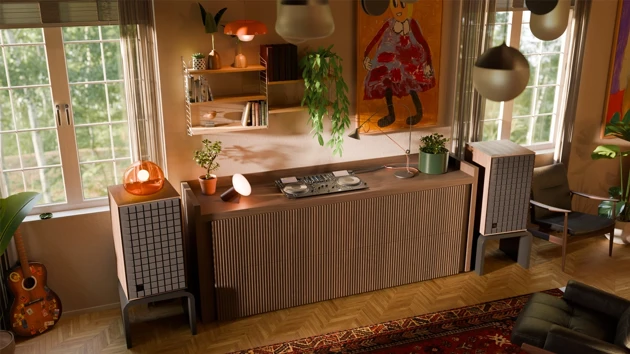
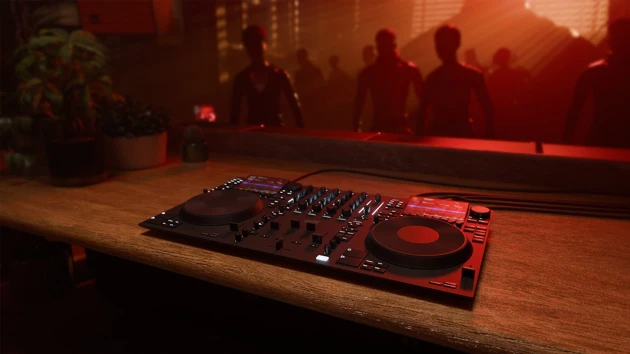
The controller in a dark club environment. The same gear, a different setting, showing how Transition one adapts from bedroom to booth.
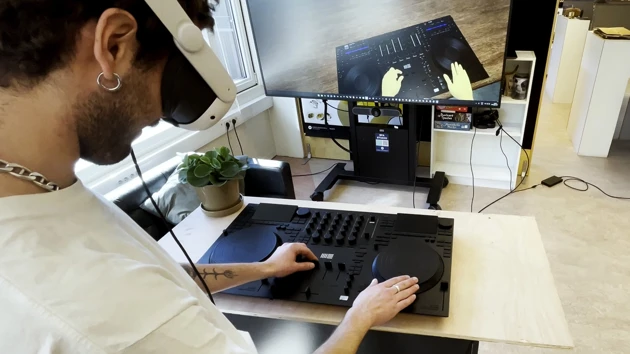
Hybrid testing setup using a physical controller model and VR headset. Users play on real hardware while immersed in a digital venue.
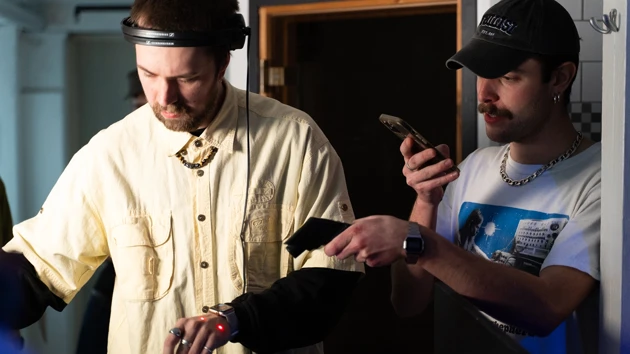
DJ workshop with simulated crowd behaviour. Audience responses are choreographed to trigger stress or boost confidence during sets.
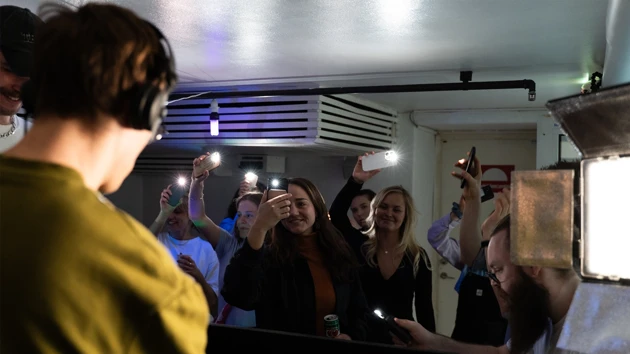
Body temperature and heart rate tracking during performance. Physical data is used to analyse how DJs react under pressure.
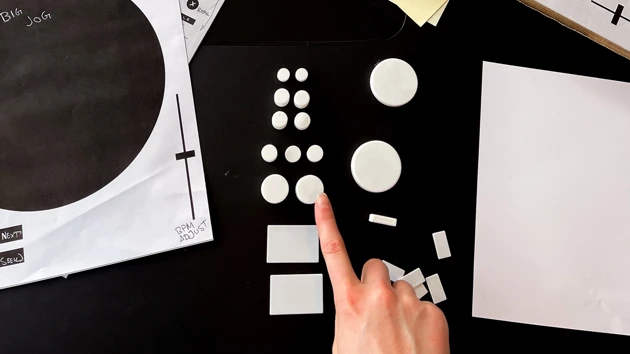
Exploration of button sizes and layouts during the prototyping phase. Each element was refined for tactility and clarity.
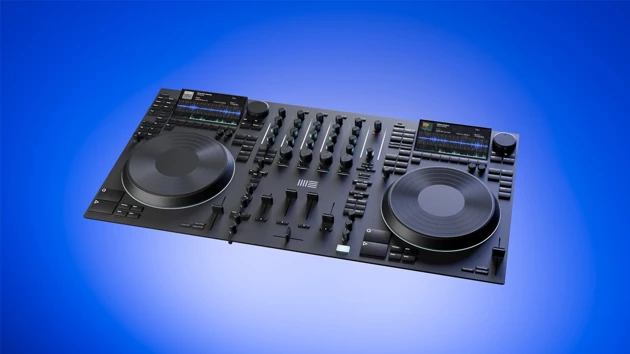
Transition one, a hybrid controller with club-standard jogs, mixer section and displays, ready for both practice and performance.

Back view showing all I/O ports. Balanced outputs, USB, RCA, XLR and more to make it fully compatible with different setups.
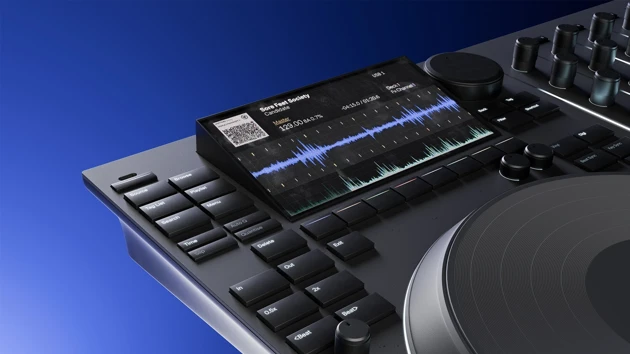
Close-up of waveform screen and button layout. Visual feedback and intuitive controls support learning.

Detailed view of left deck interface. The design mirrors professional gear but is optimised for accessibility and compactness.












